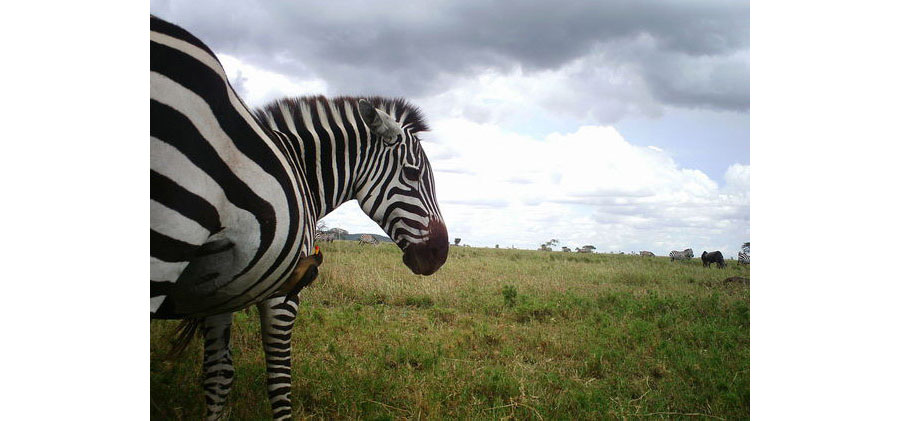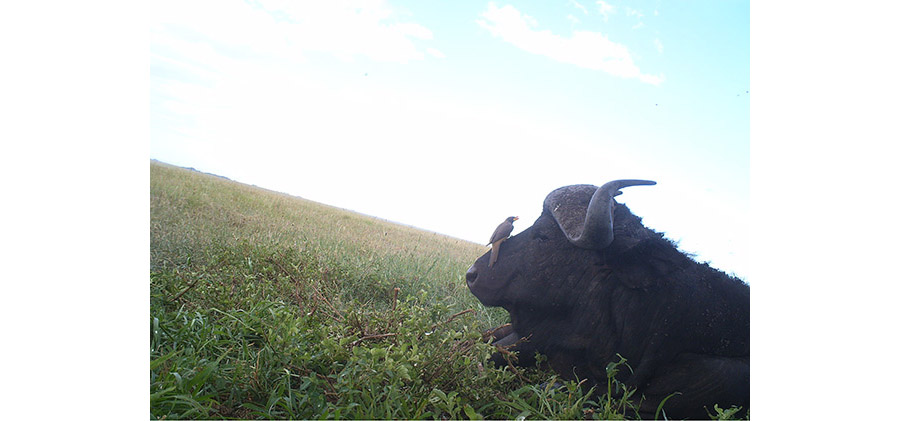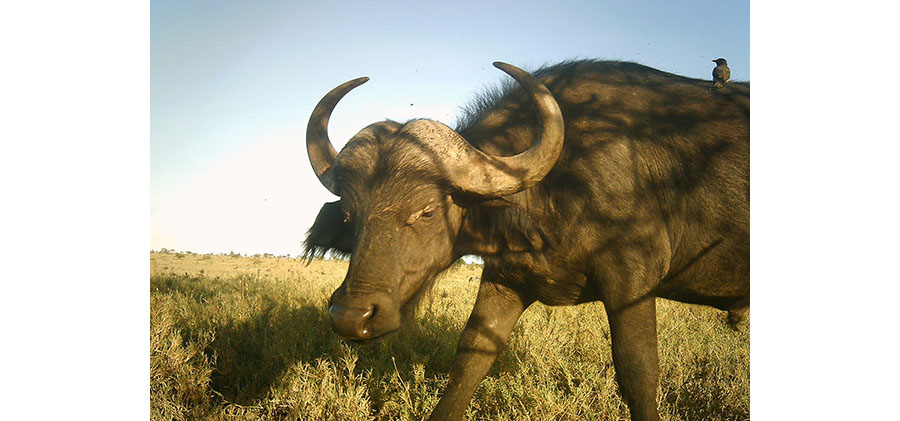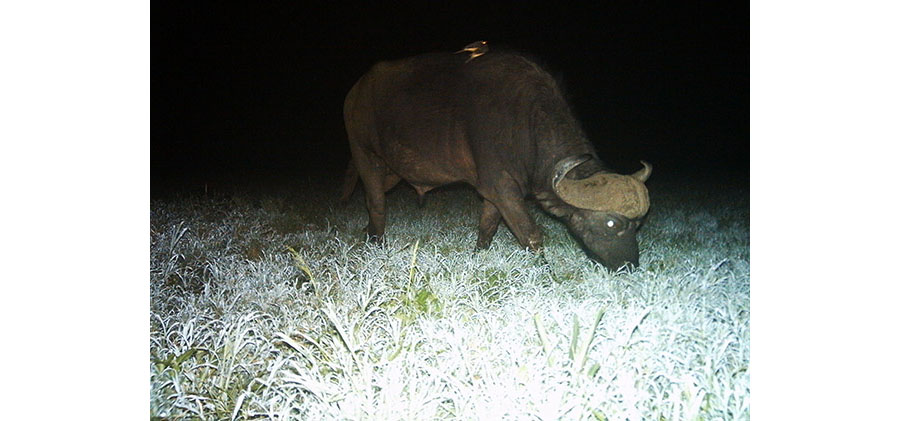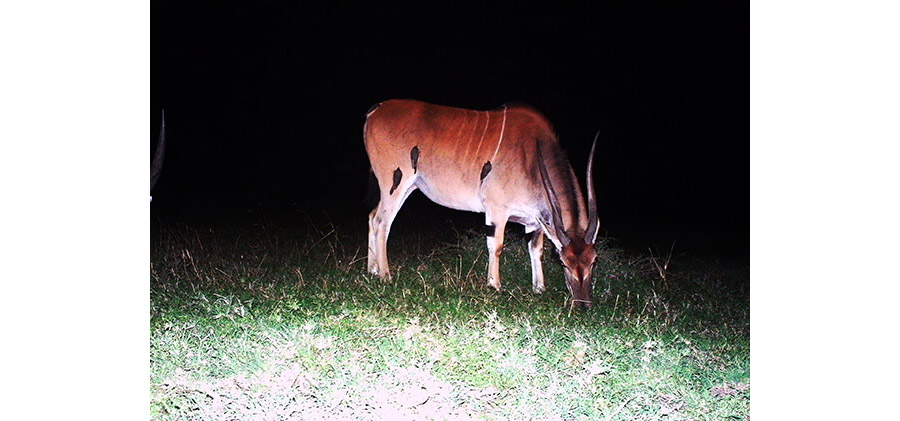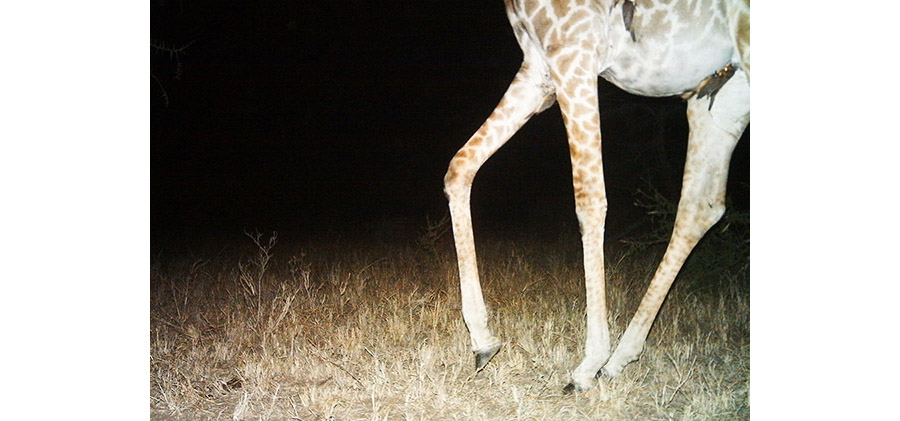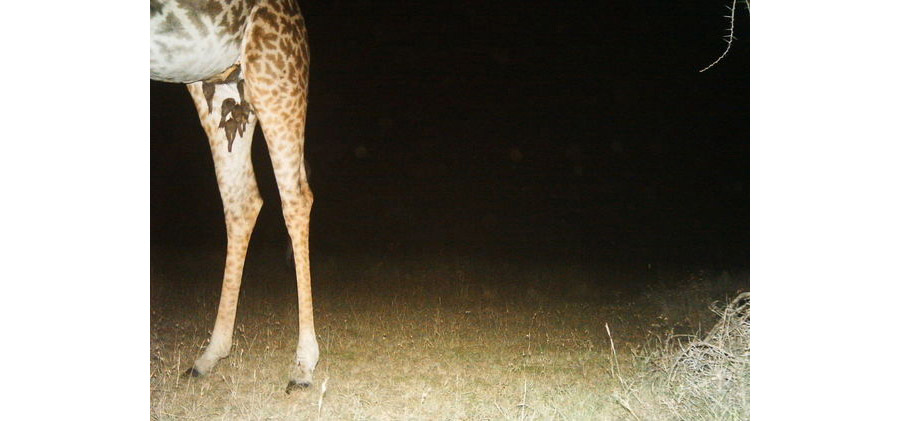These Birds Sleep Clinging to Giraffes' Groins
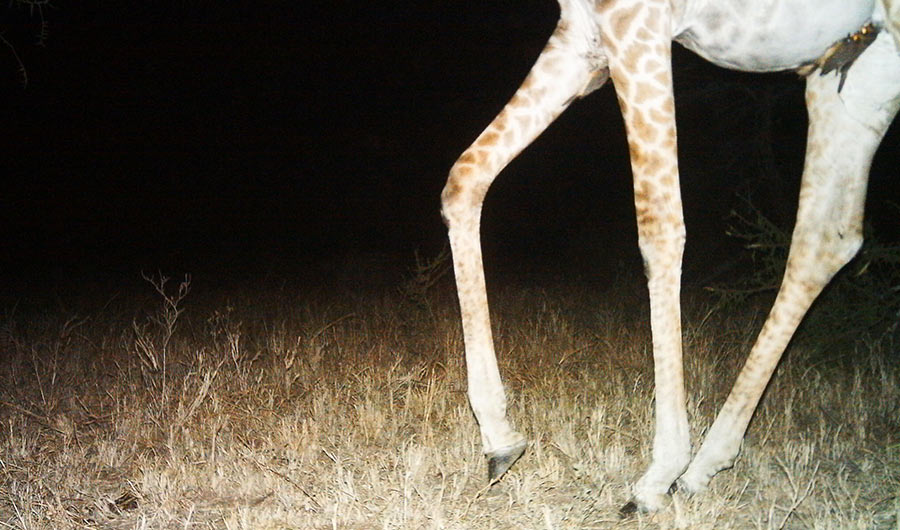
Attribution-NonCommercial-ShareAlike 3.0 Unported License
(Inside Science) -- When researchers first saw that their motion-triggered cameras had captured pictures of birds clinging to giraffes' crotches, they figured it was a fluke. But when they pored through their more than 1 million photos of Serengeti wildlife, they found that the yellow-billed oxpecker regularly roosted in the unexpected location.
"I found it over and over and over again," said Meredith Palmer, a behavioral ecologist and graduate student at the University of Minnesota in St. Paul. "They're primarily up there in the nether regions."
Yellow-billed oxpeckers spend their daylight hours eating ticks and dead skin off of African mammals. Unlike the similar red-billed species, which eat off of a wide range of large and medium-sized African creatures, yellow-billed oxpeckers specialize on the Serengeti's largest mammals, including giraffes, buffalo, and a kind of large antelope called eland.
Researchers speculate that this dietary difference is why red-billed oxpeckers typically roost in trees at night, while yellow-billed oxpeckers often roost directly on large animals. Red-billed oxpeckers are more equal-opportunity eaters, so they probably have an easy time finding an animal to feed off of each morning, said Palmer. Yellow-billed oxpeckers have a more limited food supply, and since that food is prone to wandering off, it makes sense to treat host animals as both bed and breakfast.
More on giraffes from Inside Science
How Do Giraffes Drink Water?
But the new study, published this month in the African Journal of Ecology, showed that the birds don't just stick with whatever host they happen to be on when the sun sets. During the day, they spend the bulk of their time on buffalo, which are more abundant than giraffes. At night, they apparently seek out giraffes, even though giraffes are comparatively rare. Out of 25 documented instances of oxpeckers roosting on mammals at night, 20 showed the birds on giraffes, while the remaining five showed them roosting on eland or buffalo.
Mike Mooring, a behavioral ecologist at Point Loma Nazarene University in San Diego, California who was not involved in the study, suggested a possible reason for the birds' nightly shift in host species preference. Buffalo may be more likely to lie down, he said, making them unstable roosts.
"The giraffes are not laying down. It's just way too cumbersome and difficult and dangerous for them to really do that," he said. "If you're an oxpecker, you might say, 'oh, this might be a better choice than a buffalo, which probably is going to be lying down a lot more.'"
The buffalo and eland carried their nighttime passengers on their backs and sides. But on giraffes, the birds preferred a different region, which Palmer referred to in her paper as "armpits" -- a term she admits is a euphemism.
It's possible that the birds' apparent preference for giraffe groins is partly a product of camera angles, since camera traps tend to offer views of the tall creatures' undersides. But the pictures themselves are hard to dismiss, with some showing as many as seven birds clustered between the long back legs.
Palmer doesn't know why yellow-billed oxpeckers are so fond of giraffes' nether regions, though she suspects it's because the spots are warm and safe, protected from predators and high enough to be out of the way of vegetation.
There's no word yet on how the giraffes feel about it.
"I can't imagine that it's particularly comfortable, with their tiny little claws digging in there at night," said Palmer. "I wish we had videos to see whether the giraffes are, like, scratching away."

